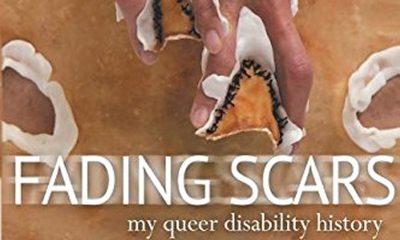Arts & Entertainment
Queer, Crip and Here: Meet blind writer Caitlin Hernandez
Author navigates intersecting identities in life, work
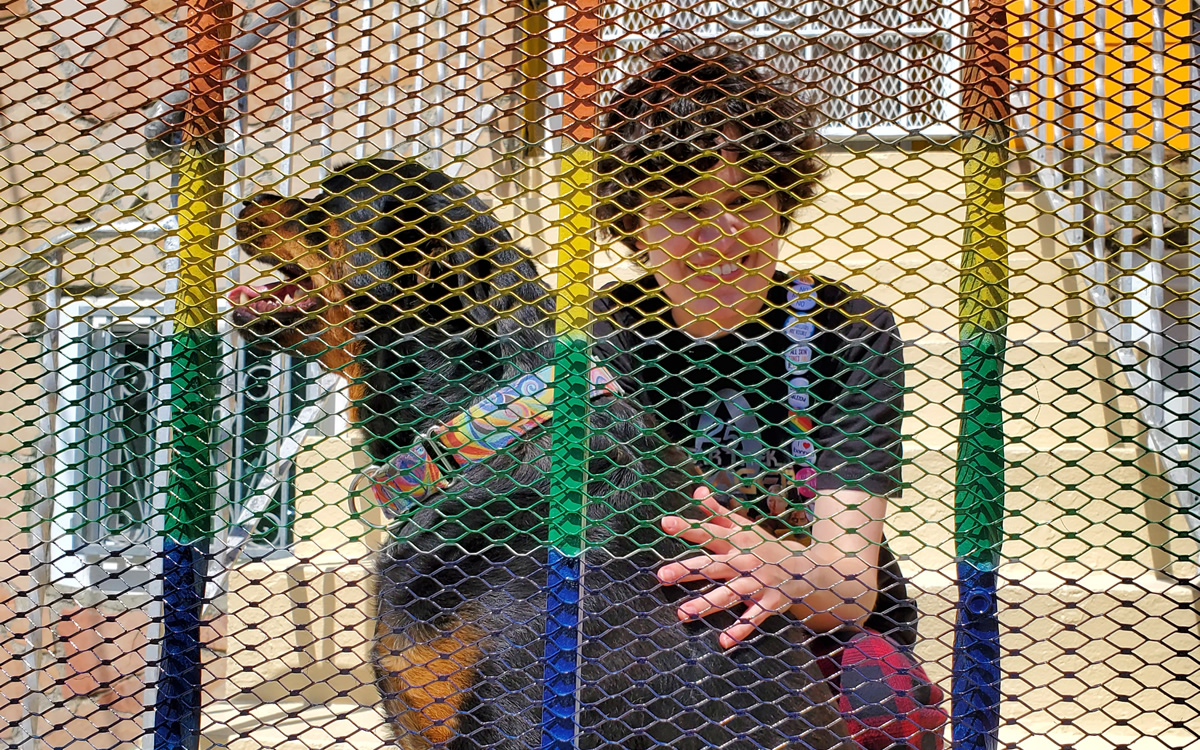
(Editor’s Note: One in four people in America has a disability, according to the Centers for Disease Control and Prevention. Queer and disabled people have long been a vital part of the LGBTQ+ community. Take two of the many queer history icons who were disabled: Michelangelo is believed to have been autistic. Marsha P. Johnson, who played a heroic role in the Stonewall Uprising, had physical and psychiatric disabilities. Today, Deaf/Blind fantasy writer Elsa Sjunneson; actor and bilateral amputee Eric Graise who played Marvin in the “Queer as Folk” reboot; and Kathy Martinez, a blind, Latinx lesbian, Assistant Secretary of Labor for Disability Employment Policy for the Obama administration, are only a few of the queer and disabled people in the LGBTQ community. Yet, the stories of this vital segment of the queer community have rarely been told. In its monthly, yearlong series, “Queer, Crip and Here,” the Blade will tell some of these un-heard stories.)
Some creators agonize for years before plunging into their art.
This wasn’t the case with queer, blind writer and teacher Caitlin Hernandez. Hernandez wrote her first “novel,” “Computer Whiz,” she writes in her bio, when she was in the fourth grade. She kept her monitor off so no one would see her “masterpiece.”
Reading and writing have been a part of Hernandez’s life for as long as she can remember. “I was writing, even as a little kid,” Hernandez, who was born in 1990 and grew up in Danville, Calif., said in a telephone interview with the Blade, “In first grade, I wrote stories in braille. They taught me to type. Because people were having to translate.”
As a kid, Hernandez used a tape recorder to tell stories. “That happens so often with blind kids,” said Hernandez, who lives in San Francisco with her partner Martha and Maite their Rottweiler.
Maite was Martha’s dog when the couple got together. “I call her my ‘stepdogter,’” Hernandez said. It’s clear from the get-go that she doesn’t take herself too seriously. Maite, her “stepdogter,” is “currently writing a picture book,” Hernandez jokes in her bio.
It’s commonly thought that disabled people lead sad, tragic lives. But Hernandez busts this myth. Martha, her partner, “reads braille with her eyes,” Hernandez whimsically writes in her bio.
Hernandez is committed to teaching and writing. But, she “loves eating coffee ice cream, watching Star Trek Voyager, singing, skipping and using her rainbow cane – sometimes all at once,” Hernandez writes in her bio.
Queerness is an integral part of Hernandez’s life: from her fiction, which tells stories of LGBTQ people, disabled people, and people of color to her rainbow cane.
“Queerness is considered cool now in many places,” Hernandez said, “it’s normalized.”
But that’s not true with disability, she added. “Generally, there’s more fear and misperceptions around disabled people,” Hernandez said.
Because of their discomfort with disabled people, she’s often left alone at social and literary gatherings.
“Because I’m blind, people frequently won’t talk to me,” Hernandez said, “even if I’ve read at an open mic.”
To make people feel more comfortable with her, Hernandez, totally blind since birth, sometimes uses a rainbow cane. “I designed it,” she said, “it has the colors of the rainbow flag. If you’re queer, you’ll get that.”
But it’s also beautiful because it’s a rainbow, Hernandez said, “It’s a great ice-breaker.”
(Hernandez uses her rainbow cane when she’s out with friends. When traveling by herself, she uses the white cane used by most blind people.)
Once people get to know [disabled people],” Hernandez said, “they’re chill with us.”
The Americans with Disabilities Act of 1990 (ADA), a landmark civil rights law, despite problems of enforcement and compliance, has done much to change life for disabled people.
The ADA generation (those born when or after the law was passed) has grown up with the expectation that disabled people have rights. They’re not surprised to see curb cuts or braille menus. They expect employers to make accommodations for disabled employees and hospitals to have sign language interpreters for Deaf people.
Yet despite the ADA, ableism persists (even within her own ADA generation), Hernandez said. A key reason why discomfort with and fear of disabled people is still so pervasive is the problem of representation, she said.
Hernandez, a Lambda Literary Emerging Writer Fellow in 2015 and 2018, is acutely aware of how disabled and queer and disabled people are portrayed in fiction and nonfiction.
“Our lives are often represented so badly,” Hernandez said, “often by nondisabled creators. There’s a lot of fear and inaccuracy.”
Thankfully, there are a few fab books with disabled characters by disabled authors, Hernandez said. She loves “The Kiss Quotient” by Helen Hoang, who is autistic. The novel portrays the romance of an autistic econometrician and her biracial male escort.
Hernandez is a fan of “The Silence Between us,” a young adult romance featuring a Deaf character, by hard-of-hearing author Alison Gervais.
“The Chance to Fly,” co-authored by Ali Stroker, the bisexual, Tony-winning actress who uses a wheelchair, and Stacy Davidowitz, is one of Hernandez’s faves. The book, a novel for middle-schoolers, tells the story of a theater-loving, wheelchair using girl, who defies ableist expectations.
Hernandez began to think she was queer when she was in high school. But, she didn’t come out then to anyone except a few of her friends. “They kinda didn’t believe me,” Hernandez said, “because a friend of ours had already come out as queer and they thought I was trying to copy him.”
After she was in college, Hernandez, who earned a bachelor’s degree in literature from the University of California, Santa Cruz in 2012, came out to her parents.
Her folks, now divorced, were fine with her being queer.
Because nondisabled people frequently don’t see disabled people as datable or sexy, some aspects of coming out are more difficult if you have a disability, Hernandez said. “We often miss one of the rites of passage of coming out,” she said, “of saying ‘I am queer – here with my queer date (or partner).’”
Hernandez’s first relationship was with a woman who was closeted. “We couldn’t be out,” she said.
Hernandez got together with her partner Martha in November 2019. Then there was the pandemic and everything was cancelled. “So we didn’t get to go out as an out queer couple,” Hernandez said.
“Everybody knows I’m partnered with Martha,” she added.
But because of ableism, sometimes people don’t see her as Martha’s romantic partner, Hernandez said.
Like many, Hernandez navigates intersecting identities. “I’m thinking more about my being of mixed race,” Hernandez said, “My Mom is white. My Dad is one-half Mexican and one-half German. I can pass as white,” she added.
She’s grappling with what it means to have a Latinx last name, Hernandez said.
She wishes she had taken Spanish. “But I took French,” Hernandez said, “I wanted to do what my friends were doing.”
As a writer, Hernandez hopes to help children who live with intersecting identities.
Her work has appeared in “Aromatica Poetica,” “Wordgathering” and in “Barriers and Belonging,” “Firsts: Coming Of Age Stories by People with Disabilities” and other anthologies.
In 2013, “Dreaming in Color,” a musical written by Hernandez, was produced by CRE Outreach at the Promenade Playhouse in Santa Monica, Calif.
Hernandez’s unpublished young adult novel “Even Touch Has a Tune” is about a queer, blind girl falling in love with another girl and surviving sexual assault, Hernandez said in an email to the Blade. “It’s fiction but has a lot of autobiographical content,” she added.
If you’re disabled, you’re more vulnerable to sexual assault. When she was a freshman, Hernandez became friends with a fully sighted guy who she’d met in her classes. “He seemed nice,” she said, “but then he came over and touched me inappropriately.”
“I froze up,” Hernandez added, “if you’re disabled, you’re vulnerable. You’re taught to be polite – to keep quiet.”
While there’s more representation of disabled people in fiction, Hernandez is still discouraged.
Because of ableism, many literary agents may not want her “disabled and assault novel,” Hernandez said. (Her unpublished YA novel “Even Touch Has a Tune” is represented by Emily Keyes of Keyes Agency.)
Too frequently, representation of disabled people is focused on ableist tropes like “inspiration porn” and “overcoming,” Hernandez said. There isn’t interest in portraying scary, difficult aspects (like sexual assaults) of disabled people’s lives, she added.
But discouragement doesn’t stop Hernandez from writing or from connecting with kids as a teacher.
Hernandez earned a master’s degree in special education and her teaching credentials from San Francisco State University in 2016. Today, she is a resource specialist with the San Francisco Unified School District.
Hernandez enjoys forging a connection with disabled and nondisabled students. “Nondisabled kids come to me for extra help,” she said.
Hernandez has accomplished much. But, “I’ve learned I don’t have to be a role model,” she said, “I don’t have to be perfect.”
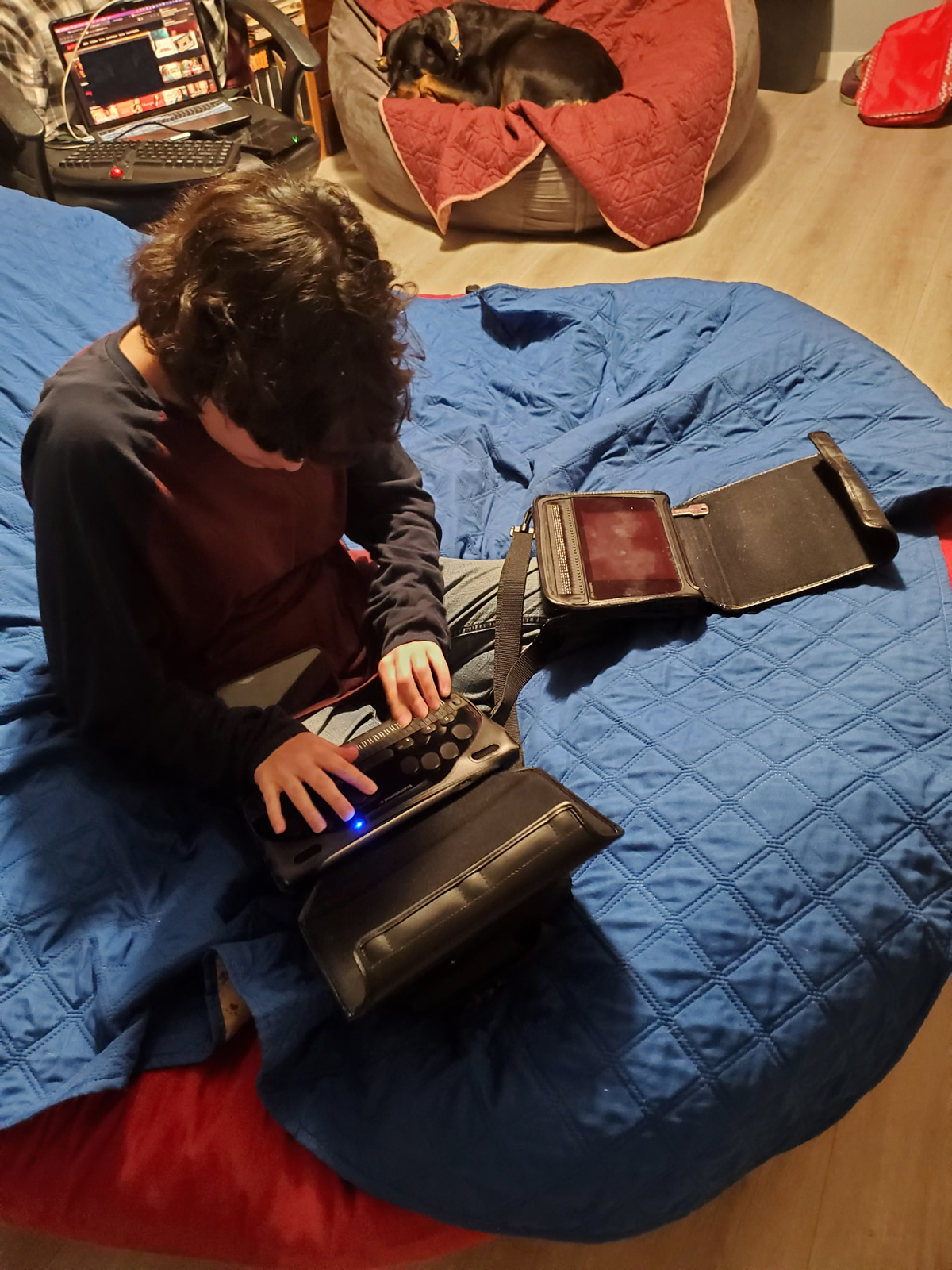
Egypt
Iran, Egypt object to playing in Seattle World Cup ‘Pride Match’
Game to take place on June 26

Iran and Egypt have objected to playing in a “Pride Match” that will take place in Seattle during the 2026 World Cup.
The Egyptian Football Association on Tuesday said it told FIFA Secretary General Mattias Grafström in a letter that “it categorically rejects holding any activities related to supporting (homosexuality) during the match between the Egyptian national team and Iran, scheduled to be held in Seattle, USA, on June 26, 2026, in the third round of the group stage of the 2026 World Cup.” Football Federation Islamic Republic of Iran President Mehdi Taj told ISNA, a semi-official Iranian news agency that both his country and Egypt “protested this issue.”
The 2026 World Cup will take place in the U.S., Canada, and Mexico. The draw took place at the Kennedy Center on Dec. 5.
Iran is among the handful of countries in which consensual same-sex sexual relations remain punishable by death.
The State Department’s 2023 human rights report notes that while Egyptian law “did not explicitly criminalize consensual same-sex sexual activity, authorities regularly arrested and prosecuted LGBTQI+ persons on charges including ‘debauchery,’ prostitution, and ‘violating family values.’” Egyptian authorities “also reportedly prosecuted LGBTQI+ individuals for ‘misuse of social media.’”
“This resulted in de facto criminalization of same-sex conduct and identity,” notes the report.
The 2024 human rights report the State Department released earlier this year did not include LGBTQ-specific references.
Soccer has ‘unique power to unite people across borders, cultures, and beliefs’
The June 26 match between Iran and Egypt coincides with Seattle Pride. The Washington Post reported the Seattle FIFA World Cup 2026 Local Organizing Committee decided to hold the “Pride Match” before last week’s draw.
“As the Local Organizing Committee, SeattleFWC26’s role is to prepare our city to host the matches and manage the city experience outside of Seattle Stadium,” said SeattleFWC26 Vice President of Communications Hana Tadesse in a statement the committee sent to the Washington Blade on Wednesday. “SeattleFWC26 is moving forward as planned with our community programming outside the stadium during Pride weekend and throughout the tournament, partnering with LGBTQ+ leaders, artists, and business owners to elevate existing Pride celebrations across Washington.”
“Football has a unique power to unite people across borders, cultures, and beliefs,” added Tadeese. “The Pacific Northwest is home to one of the nation’s largest Iranian-American communities, a thriving Egyptian diaspora, and rich communities representing all nations we’re hosting in Seattle. We’re committed to ensuring all residents and visitors experience the warmth, respect, and dignity that defines our region.”
The 2034 World Cup will take place in Saudi Arabia.
Consensual same-sex sexual relations remain punishable by death in the country. The 2022 World Cup took place in neighboring Qatar, despite concerns over the country’s anti-LGBTQ rights record.
Television
‘Heated Rivalry’ is the gay hockey romance you didn’t know you needed
Spoiler alert: It’s not really about hockey

Spoiler Alert: “Heated Rivalry” is not about hockey.
The new limited series, produced for the Canadian streaming service Crave and available in the U.S. on HBO Max, may look from its marketing like a show about hockey. It definitely contains a lot of scenes involving hockey – being played, being watched, being talked about – and the story is surrounded by hockey; its two main characters are professional hockey players, and their competition as opposing hockey champions (the “rivalry” of the title) is a major factor that moves the plot.
Even so, if you’re a hockey fan who knows nothing about it, and you stumble across it while looking for something to watch, be warned before you press “play” that you are probably in for a big surprise.
Adapted from “Game Changers,” a popular book series by Canadian author Rachel Reid, the show follows the two above-mentioned hockey pros – Canadian Shane Hollander (Hudson Williams) and Russian Ilya Rozanov (Connor Storrie), each of whom is a star player for their respective team – as they compete against each other with puffed-up “alpha” swagger, on the ice and in the media. When the skates (and cameras) are off, however, there’s a different story going on. Despite the jocular animosity of their public relationship, there’s something else brewing between them in private, and it comes to a head when a commercial shoot leads to an unexpected rendezvous in a hotel room.
Well, unexpected for them, at least. We in the audience have seen it coming since that first smoldering glance across the rink.
From there, “Heated Rivalries” continues over a course of years as the two secret lovers use every match, tournament, or Winter Olympics where they compete against each other as an opportunity for more rendezvous in more hotel rooms. But while their meetings may be all about a release of pent-up passion, the bond between them is based on something more. In the high-stakes world of professional hockey, there’s not much they can do about that – publicly, at least – without killing their careers; in Ilya’s case, as a Russian citizen and the son of a prominent government official, the situation carries the potential for even graver consequences.
That’s just at the end of the first two episodes, though. The show, which drops an episode weekly through December, leaves us hanging there to explore the story of another hockey player, Scott (François Arnaud), teammate and best friend to Shane, who becomes entangled with smoothie barista Kip (Robbie G.K.) in a whole secret gay life of his own.
If you’re thinking that the idea of a gay love story between two butch hockey players is a preposterous premise for romance fiction, think again – or at least redefine your idea of “preposterous.” It’s a genre that has exploded in popularity among a surprisingly large demographic of romance literature fans who also love hockey, combining the thrill of forbidden love with the drama and excitement of their favorite sport to catapult numerous writers, including Reid, onto the bestseller lists, which was surely a factor in the choice to translate her “Games Changers” books to the screen, courtesy of the show’s queer creator/writer/director Jacob Tierney.
The latter (also co-creator of “Letterkenny,” another popular and queer-friendly Canadian show with a strong hockey presence) delivers it with all the glossy, high-charged passion one would expect – and more – from a romance about world-class athletes in love. Set within the rarified world of wealth and privilege that is professional sports, the drama takes place against a backdrop of packed arenas, awards ceremonies, elegant fundraisers, and luxury hotels, where the protagonists must play at being enemies while secretly planning their next hook-up with each other.
Which brings us to the thing that really makes “Heated Rivalry” the buzziest queer show of late 2025: the sex. The show takes full advantage of its story’s obvious sex appeal – as well as its leading actors’ sculpted, athletic bodies – to serve up some of the hottest onscreen trysts in gay TV memory. Though they stop just short of being “explicit,” they’re the kind of sex scenes that push the limits of “softcore” right to the edge and make sure we know exactly what’s happening, even if we can’t see the details. Tierney turns those steamy private meetings between Shane and Ilya into set pieces and centers entire episodes around them, because he knows they’re what the audience is there for. Like we said, this is not really a show about hockey.
That said, it’s not really just a story about sex, either. In between those steamy scenes of athletic carnality, there’s a lot of percolating emotion happening – and thanks to the exquisitely tuned performances of Williams and Storrie, whose electric chemistry doesn’t just spark during their lovemaking scenes, but crackles through their every moment together on screen, it all comes across with elegant clarity. Shane and Ilya may want each other’s bodies, but there’s something more they want, too. There’s a tenderness in the way they look at each other, even when they’re smack-talking on the rink, and it infuses their scenes of passion, too, which arguably makes them even more blistering hot. More than that, it calls to us with its fond familiarity; it’s that heady feeling to which most of us, if we’re lucky, can relate, a sense of yearning, of needing another person so keenly that it feels like a physical sensation. In other words, it feels like being in love.
Of course there’s another layer too, which hangs over everything and ultimately fuels all the conflict in the plot: the pervasive homophobia that exists in professional sports, creating an atmosphere in which players are pressured to present nothing but a masculine, definitively “straight” image and any hint of non-heterosexual leanings is enough to destroy a career. That’s not a situation limited only to pro athletes, of course; many of us in the wider world also face the same dilemma, which is why we can all relate to this aspect of their love story, too.
Still, it would be misleading to say that “Heated Rivalry” is really about social commentary either, though it certainly brings those issues into the mix. With only half the six-episode season released so far, it’s hard to draw a certain conclusion, but what stands out most about the series so far is the way it captures the palpable joy of being in love – and yes, that includes the joy of expressing that love physically. These joys come with pain, too, when they can only be shared in secret, and it’s that obstacle that Shane and Ilya – and apparently, with the side trip of episode three, Scott and Kip as well – must find a way to overcome if they want their real yearning to be fulfilled.
For now, we’ll have to wait to find out if they can all make it. In the meantime, you know we’ll all be watching each new installment with our full attention, waiting to see what happens during Shane and Ilya’s next match-up.
And no, we’re not talking about hockey.
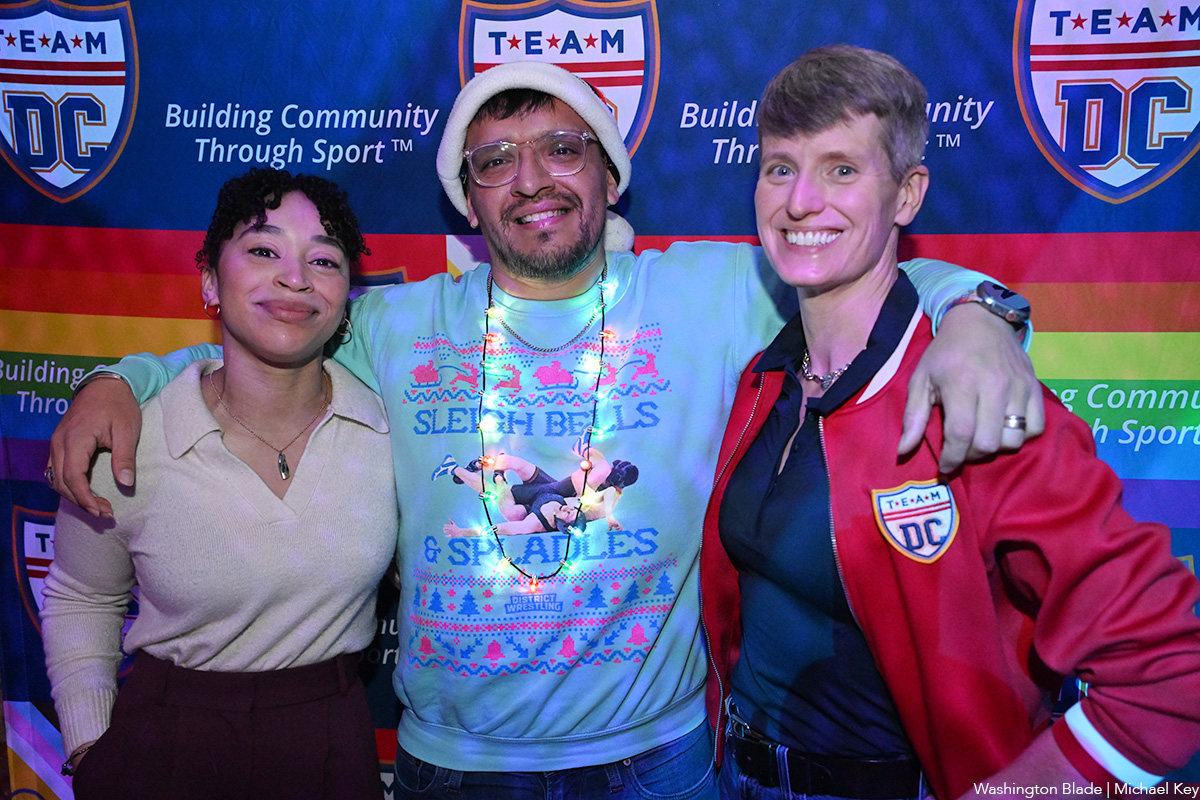
The umbrella LGBTQ sports organization Team DC held a holiday party at Trade on Monday, Dec. 8. Attendees brought clothes and coats for a clothing drive.
(Washington Blade photos by Michael Key)
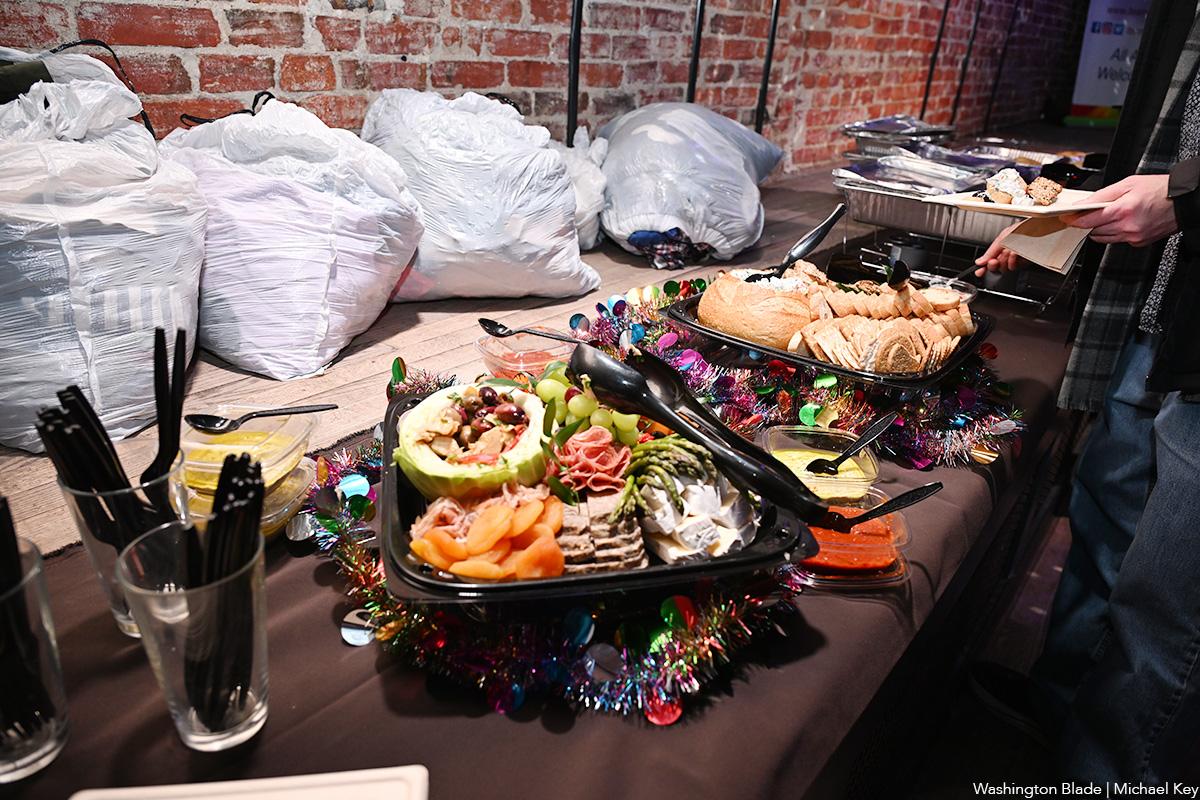
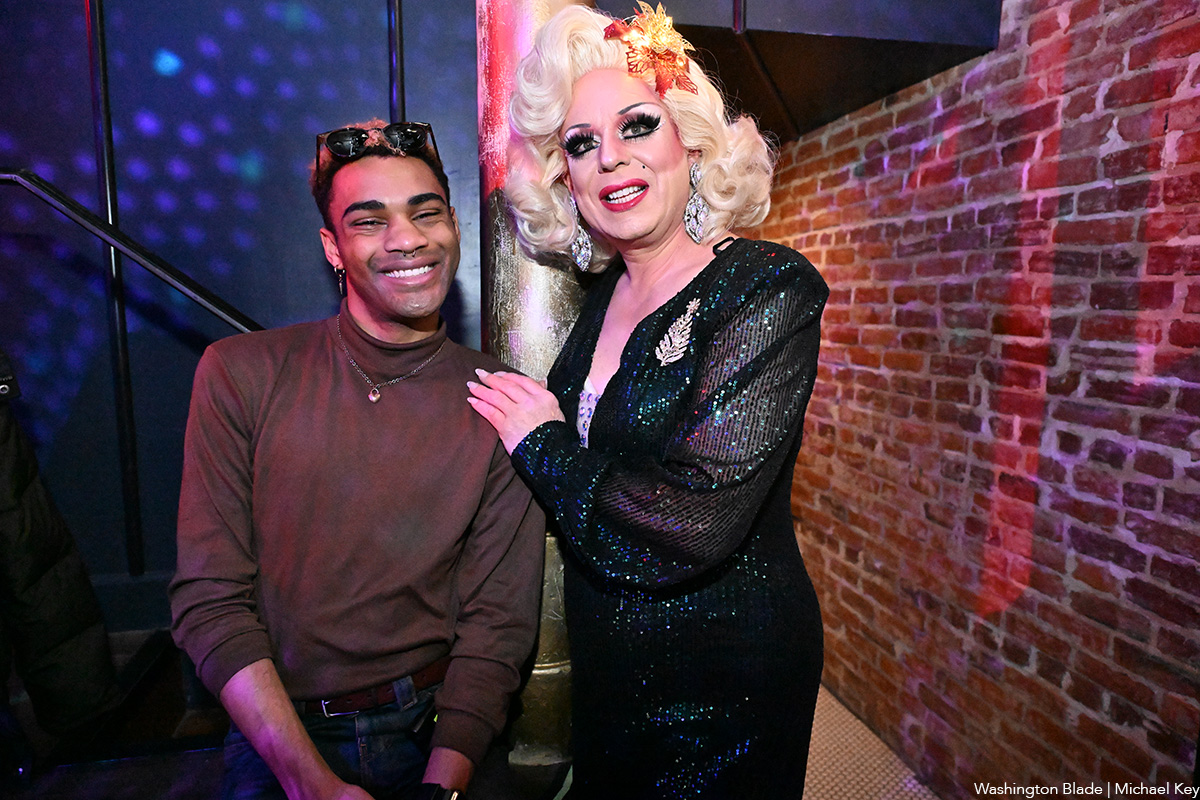
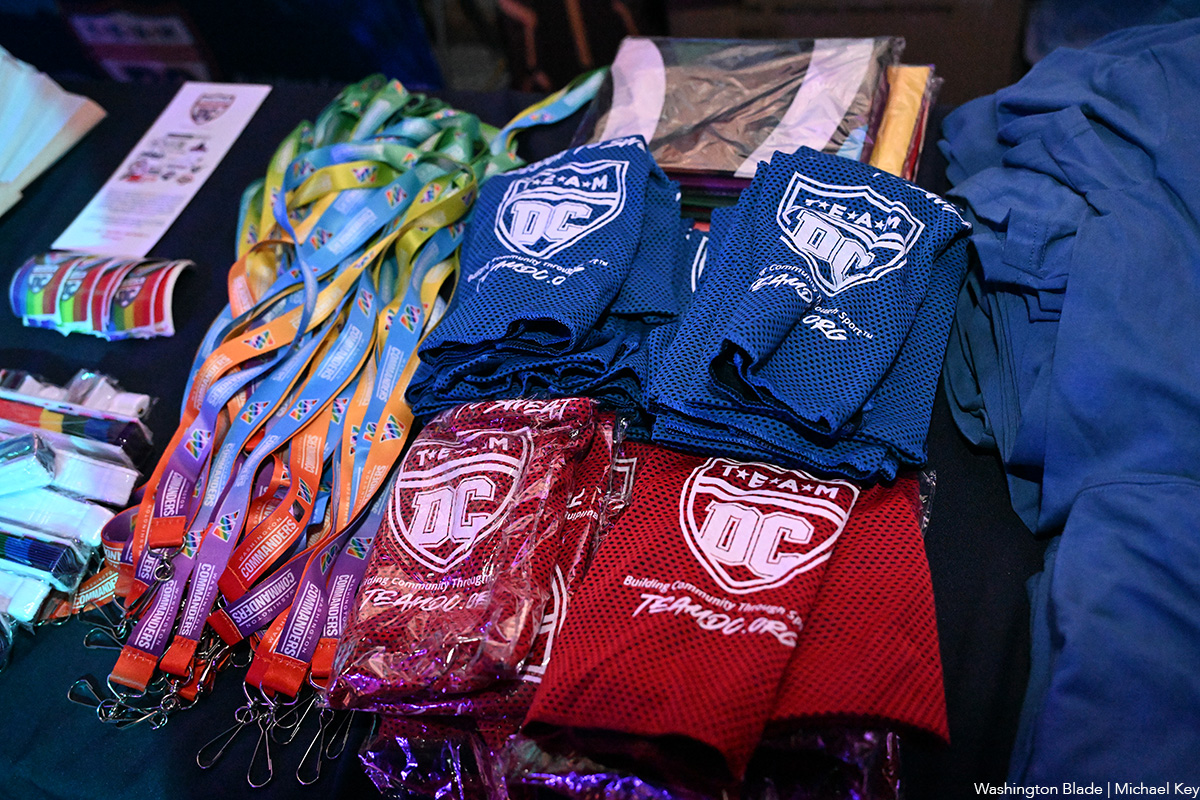
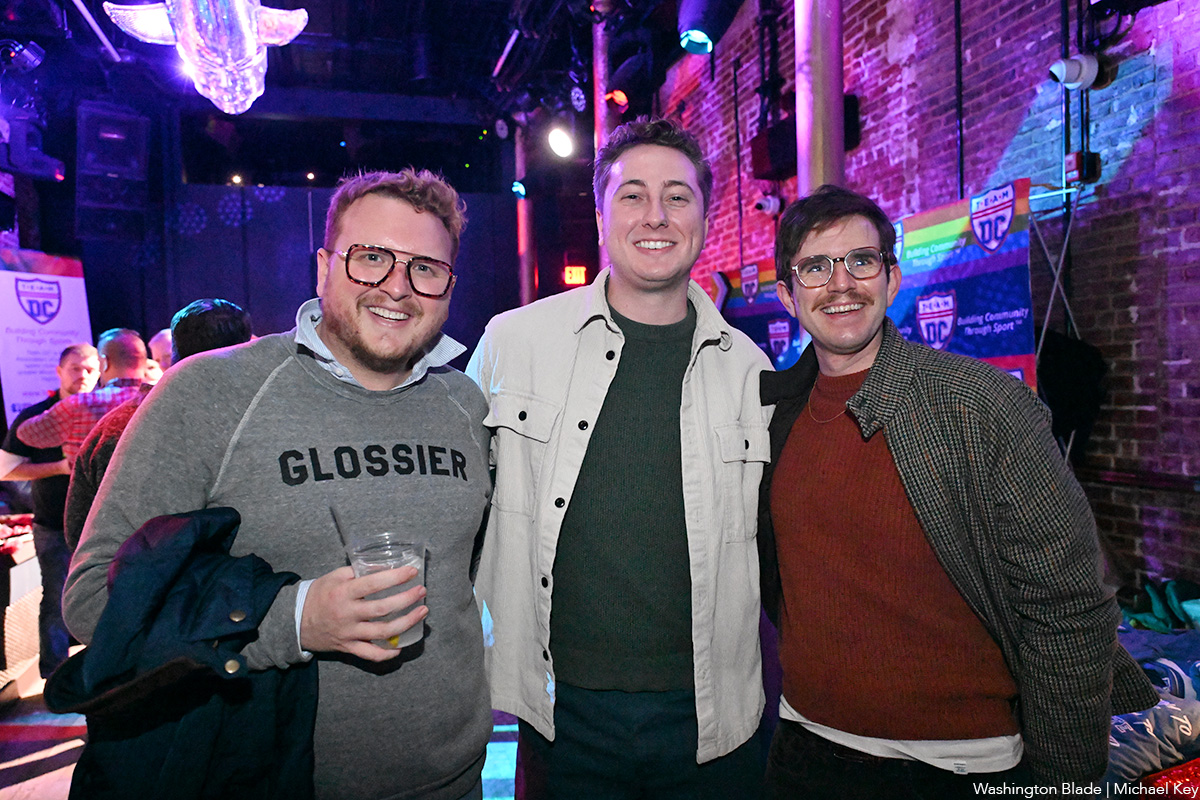
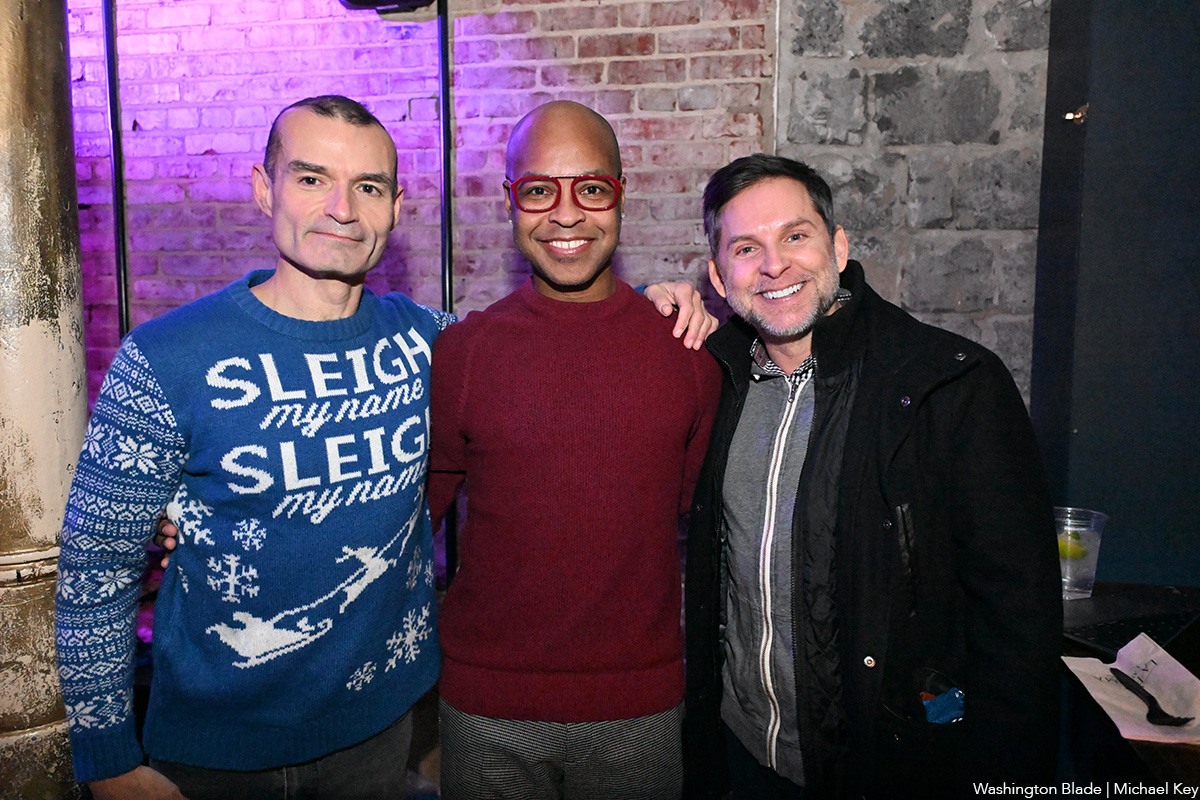
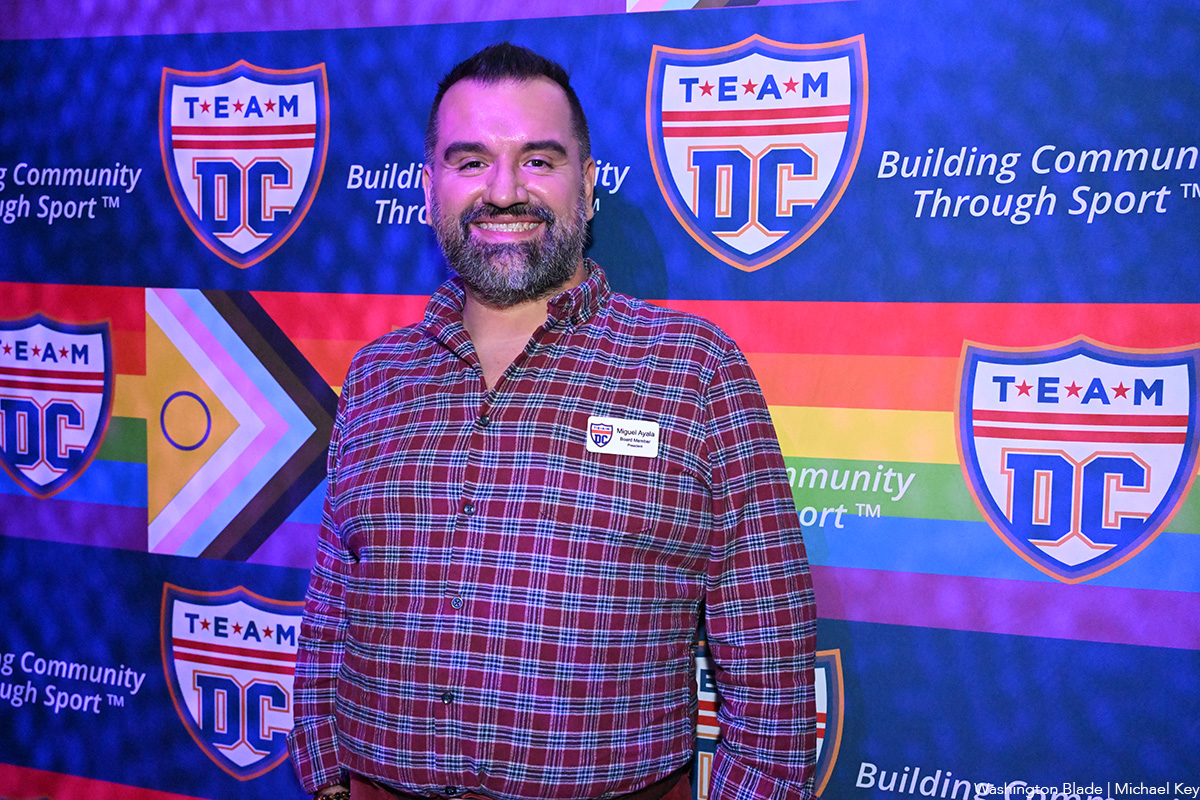
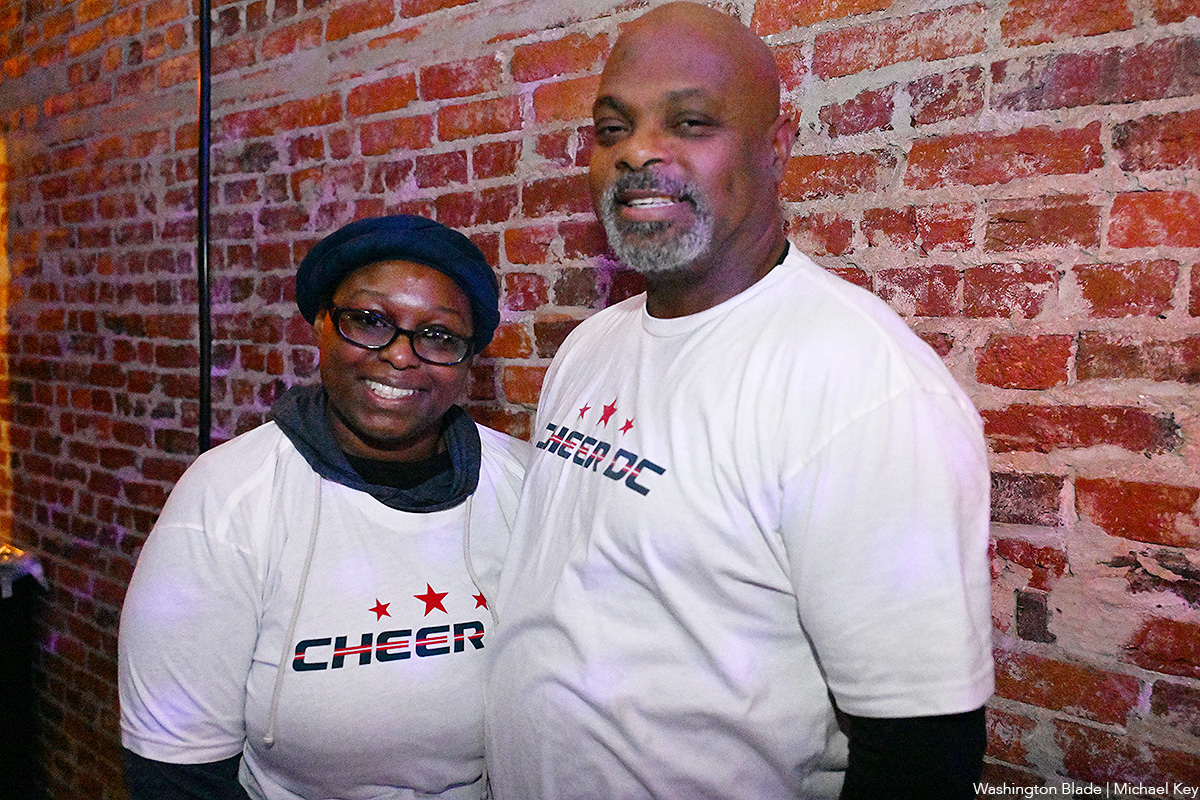
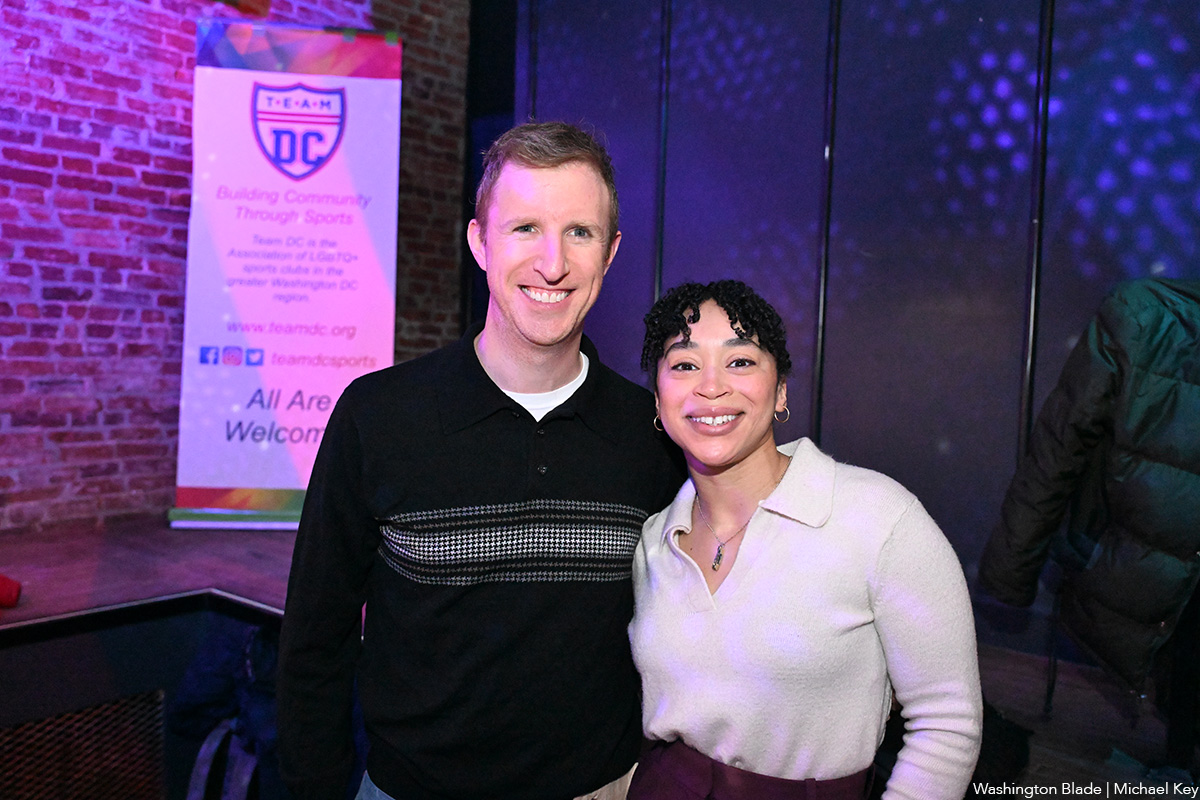
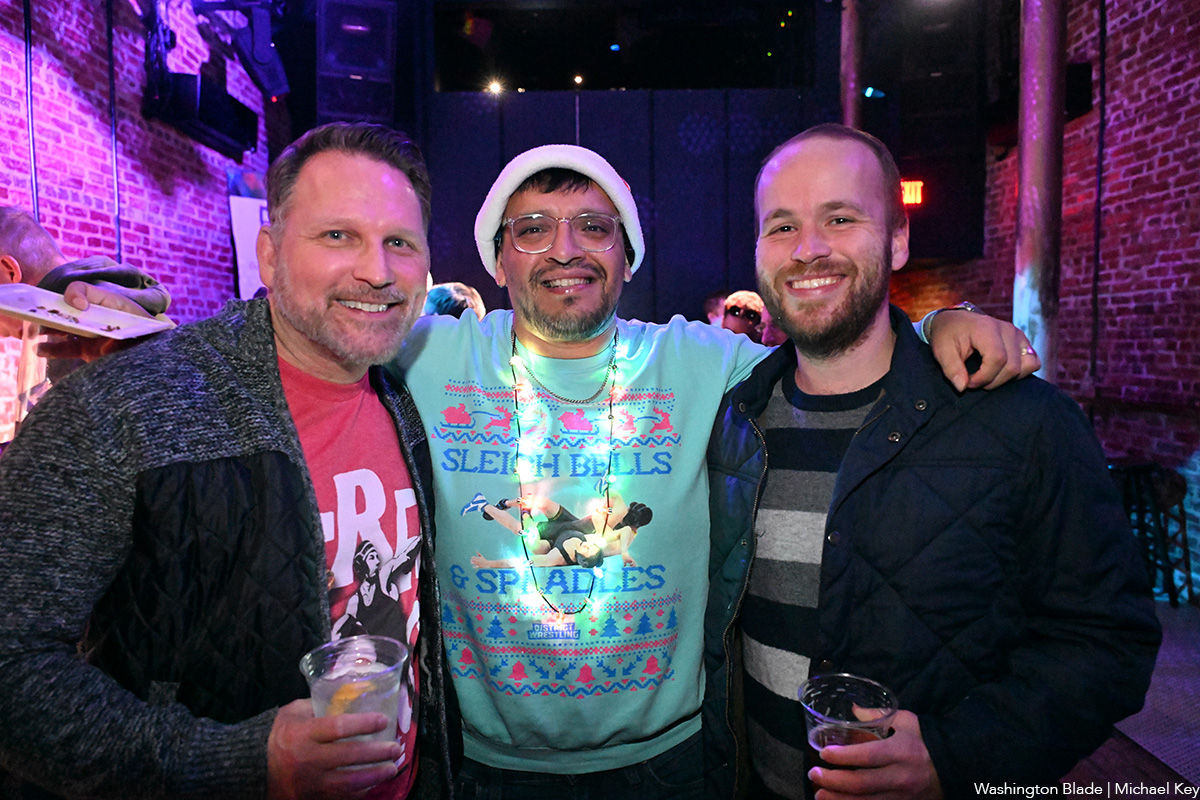
-

 The White House4 days ago
The White House4 days agoTrump’s shocking East Wing amputation—and the painful fallout Americans won’t ignore
-

 Health3 days ago
Health3 days agoThe harsh truth about HIV phobia in gay dating
-

 District of Columbia4 days ago
District of Columbia4 days agoThird LGBTQ candidate running for Ward 1 D.C. Council seat
-

 Arts & Entertainment4 days ago
Arts & Entertainment4 days agoCynthia Erivo, Eva Victor, and ‘Blue Moon’ bring queer representation to Golden Globe film nominations





